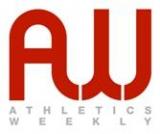Folders |
Biomechanics: Efficient runningPublished by
Matt Long, Jamie French and Barry Cook consider biomechanics and look at how Mo Farah uses his arms and core while runningRecently we explored the biomechanical focus which coach Alberto Salazar developed in trying to get Dathan Ritzenhein to run more efficiently. We then concentrated on how to make efficient biomechanical adjustments to both gait cycle and foot placement. In continuing to build upon the research of Dr Jessica Leitch of Oxford University (BMC News, 2013), our final piece focuses predominantly on the good practice which can be observed in Mo Farah s arms and core. ArmsThe arms act as levers, which in biomechanical terms are a series of connected rigid bars which rotate about an axis of rotation or fulcrum. As levers, the arms are important to the provision and application of force by both initiating movement (on the start line) and continuing movement. Video analysis confirms that Farah holds his arms relatively high with a markedly bent elbow. Not only does the drive of his arms backward balance his lower body forces, it also helps to effect greater forward propulsion. Farah s shoulders tend to remain relaxed, allowing the arms to move more freely and therefore assist in propelling him forwards. There is very little movement where the arms cross the chest and this prevents the body from rocking from side to side as often occurs with runners experiencing fatigue. His hands tend to remain open with his relaxed thumbs placed on his index fingers. CoreIt is the ability of the transversus abdominis, both internal and external obliques, the quadratus lumborum and the diaphragm to stabilise the core of the body during movement. This provides a stable platform for the limbs to move and exert force. While present at the Luzhniki Stadium for the 2013 World Championships in Moscow, Long observed that Farah was able to keep a relatively level and stable pelvis even during the latter part of his 10,000m final. If the hips remain low this tends to look like a sitting position which restricts stride length and the amount of force that can be generated by the drive leg pushing downward and backward. Keeping his hips high allows for Farah s longer stride length to be maintained throughout his races aiding force to be more directly transferred up through his legs, hips and upper body and thus facilitating greater forward propulsion. Grimshaw et al (2007) note that at foot strike the hip is flexed to around 45 degrees and that during the drive off phase the hip extends to approximately 9% at toe-off. By maintaining a tall posture with high hips, the knee is prevented from collapsing inwards, leading to a more efficient application of force, and in turn helping Britain s best to run faster. We know that both coach and athlete need to develop a detailed understanding of how the lever movement and core stability can improve performance. But how do we begin to do this by making short, medium and long-term interventions? Short-termLong regularly shouts instructions when coaching with national mentor Bud Baldaro and Sally Straw with the Birmingham University squad which contains international athletes. For example, he will shout run as if you had a helium balloon attached to the top of your head” to try to ensure that athletes immediately maintain a tall posture with high hips. A second example often recommended is the command-based analogy to not spill the bucket of water”. Getting the athlete to visualise a bucket of water seated inside the pelvis and a forward or backward tilting pelvis spilling” the water helps them to maintain a neutral pelvis”. It also encourages the coach to develop an understanding of neuro-linguistic programming in terms of an awareness of the learning preferences of diverse athletes. The use of verbal instructions to invoke mental imagery will work better with some athletes than others. Medium-termA medium-term method favoured by French in his coaching at Leeds Met University is to periodically get runners to hold crisps between their fingers and thumb in order that they learn to maintain both relaxed hands and shoulders. In terms of working core stability, a dynamic plank (pic 1, below) whereby left and right legs are alternatively moved away from the core and side to side would be an appropriate drill to be performed over a microcycle or mesocycle of training.
The maintenance of a level pelvis is dependent upon hamstring and lower-back flexibility as well as hip flexor strength so both the lengthening and strengthening of muscle groups around the pelvis is paramount. Isometric squats (pic 3, below) can help to develop strength in this area which also aids foot placement. In order to prevent the inward collapsing of the foot at the point of ground contact, the gripping of a towel with the toes to strengthen the foot arch is recommended.
Long-termFarah has undoubtedly progressively developed the fitness components of his training in terms of its frequency, intensity and Also beware that biomechanical adjustments if effected inappropriately, can lead to negative unintended consequences in terms of both performance and injury. The exercises shown are not deemed to be perfect technique and are for demonstration purposes only Dr Matt Long, Jamie French and Barry Cook are UKA coach education tutors The post Biomechanics: Efficient running appeared first on Athletics Weekly. Read the full article at: www.athleticsweekly.com
More news |

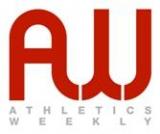
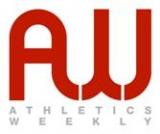
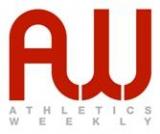


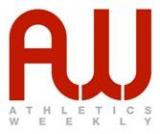

 Other effective drills are lateral side bends weighted with a dumbbell (pic 2, right) and medicine ball work with forwards, backwards and overhead movement.
Other effective drills are lateral side bends weighted with a dumbbell (pic 2, right) and medicine ball work with forwards, backwards and overhead movement.
